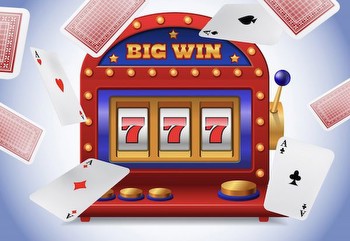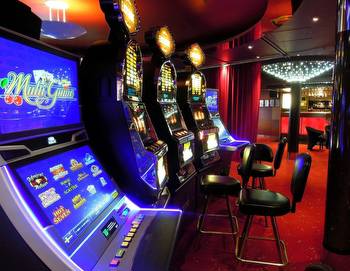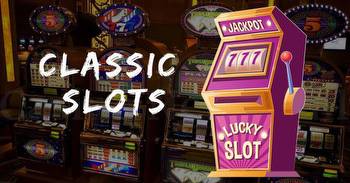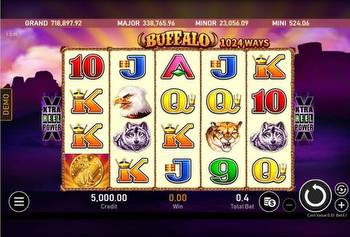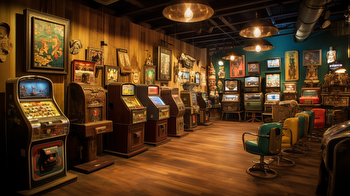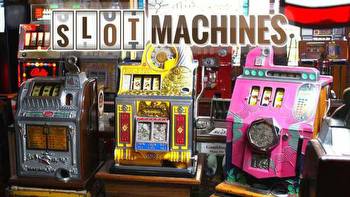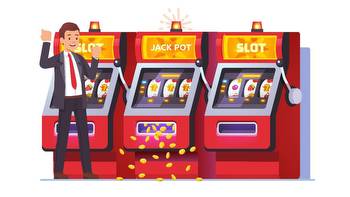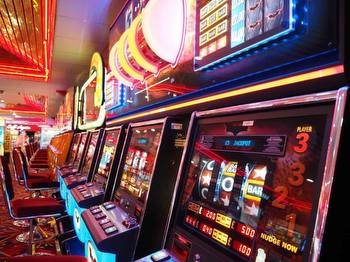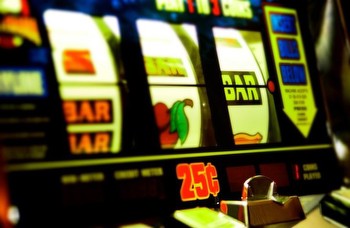Evolution and History of Slot Machine
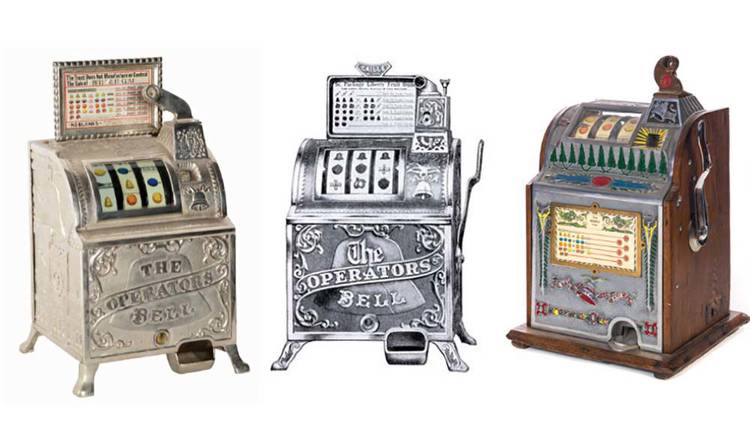
A slot machine, known as a “one-armed bandit,” is a popular gambling machine that has drawn players’ attention for many years. Its origin slot machine was invented in the late 19th century, when Charles Fey created the first mechanical slot machine, “Liberty Bell,” in San Francisco, USA. So, who invented slot machines, and the very first slot machine to appear in history was developed by whom?
Who Invented Slot Machines And When?
In the United States, Charles Fey, a technician from California, invented the first slot machine named “Liberty Bell” in 1895. This device had three rotating reels with different symbols and a mechanism for paying out winning combinations. The Liberty Bell laid the foundation for the gambling industry’s growth.
��Interesting Note: Slot machines are also called pokies, short for “pokies machines” in Australia and New Zealand. Pokies made their debut in the late 19th century. “Barbarian Queen” pokie is the most played in Australia. But who invented pokie machines? It was created by Aristocrat Leisure in 1986, and ever since then, it has become trendy.
- Popularity: Online pokies notably contributed to a $66 billion global online gambling business in 2020.
- Features: Online pokies increase player engagement by providing a variety of themes, engaging bonus rounds, and progressive jackpots.
- Mobile Dominance: they have become popular due to mobile accessibility, and mobile gambling generates a sizable percentage of revenue.
- Nowadays, Aristocrat is a sought after, established provider that offers a wide collection of free slots and online pokies for online players that are available on PC, mobile, etc. By the way, review examples on this page with new pokies online free games by Aristocrat and other trusted developers.
First Slot Machine Evolution Line: History of Slots
Over a century since the first slot machine one-armed bandit in San Francisco in the 19th century, slots have evolved from mechanical masterpieces to a digital dominance of online gambling, with electromechanical slots introduced in the 1960s. The United States, the United Kingdom, Australia, Japan, and Germany were popular spots for mechanical and electromechanical slots.
- United States: The United States pioneered the development and history of slot machines (mechanical and electromechanical). Las Vegas became synonymous with these classic machines, shaping the gambling industry in the 20th century.
- The United Kingdom: During the mid-20th century, mechanical and electromechanical ones gained popularity in the UK, particularly in seaside resorts, amusement arcades, and pubs, with “fruit machines” becoming a cultural phenomenon.
- Australia: In Australia, mechanical and electromechanical one-armed bandits, known as “pokies,” gained popularity in pubs, clubs, and casinos. The term “offline and pokies” refers to all types of slots, including digital ones.
- Japan: Japan’s unique “pachinko” mechanical slots, featuring multiple rows, have been a significant part of Japanese entertainment culture for decades, combining pinball and slot machine elements for a unique gambling experience.
- Germany: Mechanical and electromechanical ones, manufactured by Gauselmann Group and Novomatic, were popular in Germany’s casinos and gambling halls.
The first video slot machine appeared in the 1970s, and as of the mid-1990s, the internet had made it possible for worldwide access to online slots. Due to favorable regulations, the UK, Malta, and Gibraltar became centers for online gambling.
Year by Year: History of Slots:
1891 – The Precursor
In 1891, Sittman and Pitt created a prototype of a contemporary pokie machine modeled after poker and continued the history of slots. Players inserted a nickel and pulled a lever to spin drums with 50 card faces. The machine’s early development established a spinning reels principle and an element of chance.
1895 – The the First Slot Machine
The name of the first slot machine is “Liberty Bell,” invented in 1895 by Californian mechanic Charles Fey, which gave rise to a modern pokie machine. The Liberty Bell had three rotating reels with images of stars, playing card suits, and horseshoes as symbols. A lever had to be pulled to start spinning reels and align symbols for a payout. The biggest payout, 50 cents, was obtained by getting three Liberty Bell symbols.
The popular concept of automated payouts and straightforwardness gained popularity, but California’s anti-gambling legislation prevented immediate cash awards, instead awarding winners complimentary gifts. The Liberty Bell’s positive market response led Fey to increase machine production, expanding machines to bars, saloons, and other amusement venues.
1907 – Fruit Symbols
In 1907, Chicago manufacturer Herbert Mills introduced the “Operator Bell”, replacing poker-based icons with fruit symbols like cherries and melons (which was the next step in the history of slot machines). This improvement simplified winning combinations and made a game less complicated. Mills’ gaming machine introduced a staggered stop function for automatic payouts, enhancing the experience. Adding fruit symbols further established a lasting association between these symbols.
1963 – First Electronic Slot Machine
Bally’s 1963 launch of the first electronic slot machine, “Money Honey,” revolutionized gaming development by incorporating electronic components, enabling an automated distribution of up to 500 pennies. The success of Money Honey in the market led to the rapid adoption of electronic ones, enhancing reliability, intricate elements, and higher bets. It was another step in the evolution and history of slot machines.
1976 – Video Slot Era
In 1976, California developed the first video slot machine, revolutionizing history by displaying spinning reels and symbols visually and introducing exciting animations to gameplay. Nevada State Gaming Commission approved video slots, confirming their legality in casinos. In 1978, International Game Technology (IGT) acquired rights to produce and market these machines, introducing improved visual effects and technology-enhanced gameplay.
The 1990s – First Online Casino
The first slot machine ever made development saw a significant boost in the nineties with the advent of online casinos. The introduction of Microgaming in 1994 made gaming accessible from home. Microgaming’s “Cash Splash” was the first online progressive jackpot slot, introducing cutting-edge elements and fostering the expansion of online gaming. Accessibility and safe payment options fueled this growth, introducing various themes.
- 1902 first ever slot machines were banned due to gambling and social issues, but Herbert Mills introduced “Operator Bell” in 1907, popularizing BAR symbols and advancing technology. The Operator Bell’s widespread acceptance in 1908 led to the pokie machine’s continued success as a popular entertainment form found in tobacconists, bowling alleys, stores, and salons.
- In 1964, Kearny Mesa in California invented the first video slot machine. This groundbreaking technology was further developed when a video slot was introduced at the Las Vegas Hilton Hotel and approved by Nevada State Gaming Commission.
- In 1978, IGT acquired Fortune Coin, a creator of video slots and online pokies, solidifying video technology in the gambling industry. This began a new era of enhanced graphics, animations, and interactive elements.
1996 – The First Second Screen Bonus
In 1996, WMS Industries Inc. introduced “Reel ‘Em,”a groundbreaking gaming machine with a second-screen bonus function, enhancing gameplay engagement and odds of winning by offering a bonus game on different screens. WMS Industries Inc.’s innovative strategy increased casino revenue, accounting for nearly 70% of income.
Short Pokies History: Alternative to The First Slot Machine
- Electromechanical Era Of Early 20th Century: Pokies were introduced to Australia during this time. But it wasn’t until the popularity of electro-mechanical coin-operated machines in the 1950s that the term “pokies” was adopted.
- Video Technology Of the 1970s – 1980s: An advent of video technology caused pokies to change. Video screens replaced physical reels, enabling dynamic images and functionality.
- Digital Transition From the 1990s – present: An emergence of online pokies coincided with digital technologies development. Players enjoy a variety of pokies from their homes thanks to the internet.
5 Top Intriguing Facts About History of Slot Machine
- Largest payout: In 2003, a player won $39.7 million on the “Megabucks”, making it one of the largest payouts in evolution and history of slot machines.
- IGT is the leading provider of free online pokies: It is known for innovative games, immersive graphics, and groundbreaking features that have transformed digital gambling.
- Liberty Bell – first slot machine invented in the late 1800s by Charles Fey, featured symbols like horseshoes and spades, with an iconic liberty bell symbol indicating the highest-paying combination.
- Pigeon Feathers: “Pigeon Drop” was an early mechanical gambling machine that introduced a whimsical twist by dispensing pigeon feathers instead of coins, providing a lighthearted gambling experience.
- Metal, Paper, Chips: Casinos transitioned from metal tokens to paper tickets, addressing the challenge of ticket loss in Las Vegas by using heavier, casino-branded chips as ticket holders.
The Development History of Slots Bonus Symbols
The first slot machine (1887) used symbols like a heart, diamond, spade, horseshoe, and liberty bell. Machines from 1902 used fruit symbols like cherries, oranges, melons, apples, and bars. Starting from 1976, with the invention of computer graphics, symbols like crown, star, 777, gem, and clover became prominent. Jack, neon reels, starburst, wild, and scatter symbols have become the most used.
- Early symbols (1890s – 1950s): Bonus symbols were simple in the early days: bells, fruits, and bars. Although these symbols didn’t activate any features, they might have helped form winning combinations or led to larger payouts.
- Wild symbols (1960s and 1970s): A “wild” symbol, developed through technology, enhances players’ winning chances by substituting for other symbols in winning combinations, becoming a key element.
- Scatters (1980s – 1990s): A scatter symbol revolutionized gaming machines by rewarding payouts regardless of their appearance on reels and triggering bonus rounds.
- Second-screen bonus symbols (1990s – Present): they enhance gaming by launching mini-games or free spins on a separate screen, making pokies more immersive.
- Expanding and stacked symbols made gameplay more dynamic (2000s–Present). Stacked symbols can fill reels, enhancing the possibility of larger prizes, while expanding symbols cover reels when activated.
- Cluster payouts and cascading symbols (2010s-Present): they offer multiple wins by replacing winning symbols with fresh ones and traditional paylines.
- Persistent symbols and multi-level bonuses (2010s-Present): multi-level bonuses allow players to experience multiple bonus rounds, while persistent symbols (often stack or interact with other icons) often yield larger payouts.
Bell Fruit Gum Slot Machines
Bell Fruit Gum, the early mechanical gambling machines well-known in the first decade of the 20th century history of slot machines. These machines, developed by Industry Novelty Company to circumvent gambling laws, used fruit symbols instead of poker symbols. Bell Fruit Gum slots paid out prizes while evading strict anti-gambling laws, demonstrating a significant advancement in gaming development.
Nickel-in-the-Slot Machines
Early coin-operated machines called “nickel-in-the-slot” allowed customers to input a nickel coin in exchange for a particular service / good. These devices first appeared in the late 19th and provided various services, such as selling short-form entertainment like peep shows and vending products like gum, cigarettes, and postcards.
First Gambling Evidence: History of Slots Players
- Ancient Dice Games: Around 3000 BC, gambling is first mentioned in historical records from ancient Mesopotamia. Archaeologists have discovered Dice made of different materials. One ancient board game, “The Royal Game of Ur”, was played with dice-like devices and dates back to about 2500 BC.
- China: Chinese gambling customs, including 2,000-year-old tiles in Pai Gow and Keno games, are renowned. Legend claims the Great Wall of China was partially funded using state lottery funds in the seventh century AD.
- Betting in Rome: Various bets, including those on chariot races and gladiator fights, were common in ancient Rome. These wagers were made possible by bookies, or “Arius,” who would accept them and pay out winners.
- Cards and the Middle Ages: Playing cards, believed to have originated in China, spread to Europe during the Middle Ages and became famous for gambling. Venice established the world’s first legal casino in the 14th century, featuring carnival gambling.
- Greek and Romans: However, in 3000 BC, dice were found in Egypt. Ancient Greeks and Romans were known for their love of gambling, although it was illegal in Rome and carried a heavy fine. Romans created a system employing chips to escape penalties, saying that stakes were worthless chips rather than money. They were able to avoid the penalties of gambling because of this strategy.
Offline VS Online: Compressed Output History of Slot Machine
Since its creation, slots have become increasingly popular, and the introduction of online slots has only increased their appeal. A quick synopsis of their voyage is given below:
Offline Slots
Late 19th century: Charles Fey invented “Liberty Bell” in 1895, ushering in the gambling history of slot machine. In casinos, bars, and other entertainment venues, mechanical and electromechanical games started to gain popularity in the early to mid-20th century.
Online Slots
In the mid-1990s, Microgaming introduced the first online casino, Gaming Club 1994, with various gaming machines. One of the oldest online progressive jackpot slots, “Cash Splash,” was first made available by Microgaming in 1996. The late 1990s: A greater variety of online slots was offered thanks to the entry of Cryptologic and Playtech companies.








